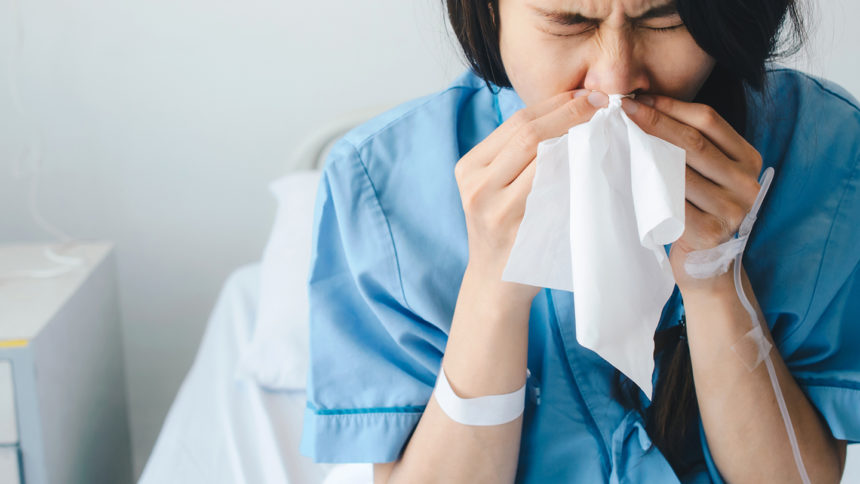
A new study reveals how a single sick caregiver can easily infect residents and co-workers in a long-term care setting and drive up treatment costs by thousands of dollars.
The Japanese study explored the clinical and financial impact of rapidly spreading respiratory infections in close quarters. Published today in the American Journal of Infection Control, it found one sick staff member added $12,000 in costs.
“This study perfectly quantifies what I’ve seen over the years and is a textbook case on the economic consequences of presenteeism,” Deb Patterson Burdsall, PhD, RN-BC, CIC, FAPIC, a leading infection preventionist, told McKnight’s Long-Term Care News Tuesday. “In a nutshell, this shows how even the best intentions are not enough if the proper precautions aren’t implemented in time.”
Burdsall spends much of her time visiting long-term care communities in Illinois. She noted how much potential there is to make similar mistakes in the US.
“Visitors or staff are the ones who unwittingly bring pathogens into their communities, and for various reasons, will work sick out of fears of losing their jobs or personal time off credits,” she said.
“Responsible people tend to be the ones who will come in sick because they don’t understand the consequences,” she added. “The study did a great job of showing cause and effect. If you use a lift and someone falls, there’s an immediate consequence to your actions. That’s not necessarily the case if you come in with a respiratory infection.”
To encourage or incentivize workers to stay home, Burdsall advised facilities to enact non-punitive policies. Better policies aimed at supporting staffing levels and curbing presenteeism can also be a recruiting tool, she said.
Tracing respiratory troubles
Study author Naoki Takayama, RN, of the National Hospital Organization Tenryuu Hospital in Japan, said the research is among the first to use statistical analysis to confirm the source and cost of a respiratory infection in a long-term care ward for patients with severe motor and intellectual disabilities.
“It sheds light on the significant clinical and financial implications of healthcare workers coming to work while ill, a phenomenon known as presenteeism that is detrimental and challenging for many healthcare facilities,” Takayama said.
Respiratory tract infections account for more than 40% of deaths among vulnerable patients with severe motor and intellectual disabilities. While many such facilities, including the one involved in the current study, follow standard employee health-surveillance protocols to prevent such infections, consistent adherence to these protocols can be difficult.
The culprit, in this case, was a part-time employee with 10 years of experience who came to work despite having a cough, nasal discharge, sore throat, and headache. She completed a health screening checklist upon arrival for her shift and practiced standard precautionary measures such as wearing a surgical mask.
It was later discovered that the employee did not directly consult her supervisor, and her supervisor did not review the reported checklist, study authors noted.
The healthcare worker and all 17 patients recovered from their infections. The median time to recovery was 10 days.
Study authors noted how multiple issues may contribute to employees’ presenteeism, including concerns about lost income, lack of days off, burdening colleagues, and maintaining professionalism.
“The findings from this study suggest that identifying and eliminating the factors that contribute to employee presenteeism should be a priority for healthcare facilities and providers to better protect their patients and employees from infectious illness,” said Linda Dickey, RN, CIC, FAPIC, president of the Association for Professionals in Infection Control and Epidemiology.



